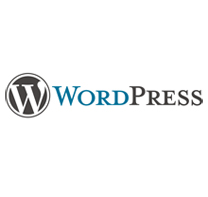WordPress is getting to be more and more a nuisance to debug in dreamweaver. Loading WordPress in Dreamweaver causes an immediate shutting of Dreamweaver. This was happening in the past because of the inclusion of the files dashicons.css and dashicons.min.css in the includes/css directory. They were not needed for testing and typical development, so, they could simply be deleted. dashicons.css and dashicons.min.css offer simple use CSS icons that are used primarily in the admin area, though they could be used in any of your development. Deleting dashicons.css and dashicons.min.css left the admin area without icons, but, the icon text descriptions remained and you could live with for preliminary testing. However, now we are back to the same crash problem.
More oversize strings have been added to other files in WordPress and they cause Dreamweaver to exhaust its workspace memory and crash. . Now, to do debugging in Dreamweaver, the following files and directories must be deleted from WordPress:
- wp-includes/css/dashicons.css
- wp-includes/css/dashicons.min.css
- wp-content/themestwentyfourteen/genericons (full directory)
- wp-content/themestwentythirteen/genericons (full directory)
- uploads/am_assets
Deleting these files/directories allow debugging in Dreamweaver. Again when testing, the situation relates to availabiliity of CSS icons and assets … for the development. These deletions increase the number of items that vanish in your use of wordpress, but, maybe you can live knowing that in preliminary debug icons and assets will be missing, but, available in an integration test. If you understand what you are deleting and what you can expect from these deletions, no problem. When you load a full version of WordPress in a full installation all icon functionality returns, but, the nuisance level of development is increasing. Someday, we will want to upgrade your Dreamweaver or start using NetBeans or Eclipse to avoid the problem.
Personally, I find Eclipse or NetBeans will be a reasonably good replacement for Dreamweaver. They are free and have some very nice features. In some cases, they have nicer features than Dreamweaver, though they do miss a few features I do like in Dreamweaver. Their big problem is they are harder to install and interface with the test server, but, if Dreamweaver continues to be a nuisance, they will be far better alternative.
